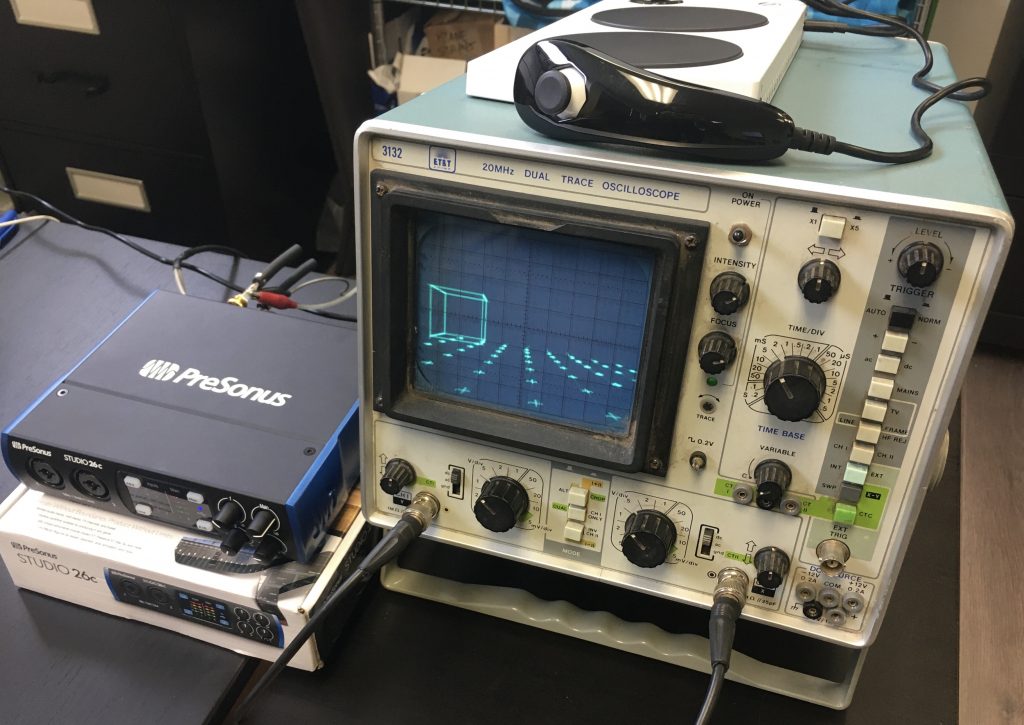A couple of weeks ago I started work on a new video game engine for vector displays. For a long time I have been enamoured by the uniquely high contrast of vector displays. A local bar named House of Targ hosted an original Asteroids arcade cabinet that only could be appreciated in-person: the super bright effect of the weapon shots was something that couldn’t be reproduced on any type of display.
Later I was introduced to Oscilloscope Music and where I discovered how easy it was to control a vector display using an audio signal. The creator of this music also produced a series of tutorials that described the audio equipment needed. This allowed me to get up and running very quickly with my own vector game engine.
My vector game engine is being developed in C# with its primary output being the ASIO audio interface. I’ve started off by using a number of math and input classes from MonoGame. After less than a week of blind programming with only a debugger to show me the buffer states, I managed to create a rotating cube that displayed first try on an old oscilloscope. After another week, I’ve got to the point where I have a very basic 3D scene that you can navigate using an Xbox One controller or the Xbox Adaptive Controller. My plan is to make alternative control video games with this as my output.

I’m not the first to be doing these types of experiments. And vector display games were some of the first video games. There was even a home all-in-one console called Vectrex! Here are some links to other cool articles and projects:
- History of Vector Graphics by Trammell Hudson
- The Secret Life of Vector Generators by Jed Margolin
- Quake on an oscilloscope: A technical report
- Hackaday posts tagged with “Vector Display”
- ompuco’s Twitter feed
- Vector Synthesis videos by macumbista
- XY – A workshop with Ted Davis (video preview)
- Why Vector Graphics Once Ruled the Arcade
…And some music-focused links:
- Oscilloscope Music
- LHC music through the ColliderScope
- Andrew Duff (modified Vectrex)
My vector game engine’s source code is available on Github under the MIT license. It’s pretty rough and I intend to use it primarily for my own experiments, but you’re welcome to peek around and check out the progress. I plan to continue to post here from time to time with updates, but for the latest news on the project, check out my Twitter feed.